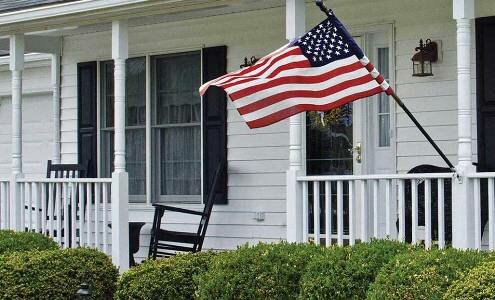There are two types of Mortgage: with a fixed interest rate - Fixed-Rate Mortgage (FRM) and with a floating - Adjustable-Rate Mortgage (ARM).
Residents of the United States always face a choice, which option of "mortgaging" for them will be more profitable.
The size of the floating interest rate is always below the fixed rate (by 1-2%), but it is significantly influenced by the conditions associated with the state of the US economy at the time of the bank's review of the rate. Taking such a mortgage, the borrower of some kind "plays roulette" with an interest rate, and has no possibility in the future to distribute its expenses.
Depending on the conditions of such a loan, the floating interest rate may not change in the first 3, 5, 7 years (3ARM, 5ARM, 7ARM) from the moment of mortgage registration, after which it can be raised to the boundary values (CAP), for example, from the initial 3% to 7%, of which 4% is CAP. At the end of the fixed period, the bank annually reviews the rate until the loan is fully repaid by the borrower, and in extremely rare cases, downward. This type of mortgage is preferred by those who plan to repay the loan in a short period of time. The rates for such a loan range on average from 3.1% to 4.5%. To date, the rate on five-year mortgages (ARM) averaged 2.85%.
The mortgage option with a fixed interest rate, due to the lack of risk, is increasingly more attracting. It is used by 75% of borrowers. Often, potential buyers of real estate are waiting for the moment of economic stability in the country, when the FRM rate is not too high and the entire crediting period is paid low interest.
90% of Americans want to buy real estate on credit choose a mortgage for 30 years with a fixed interest rate. The average rate for such a loan at the beginning of 2016 was 3.72%.
In addition to lucrative credit terms, the US state provides its citizens with the opportunity to refinance mortgages (repaying the loan balance by issuing a loan with another bank with a lower interest rate), and also creating all kinds of mortgage lending programs for low-income citizens, veterans, victims of disasters (who lost their homes); Pensioners, citizens using energy-saving systems, etc.

